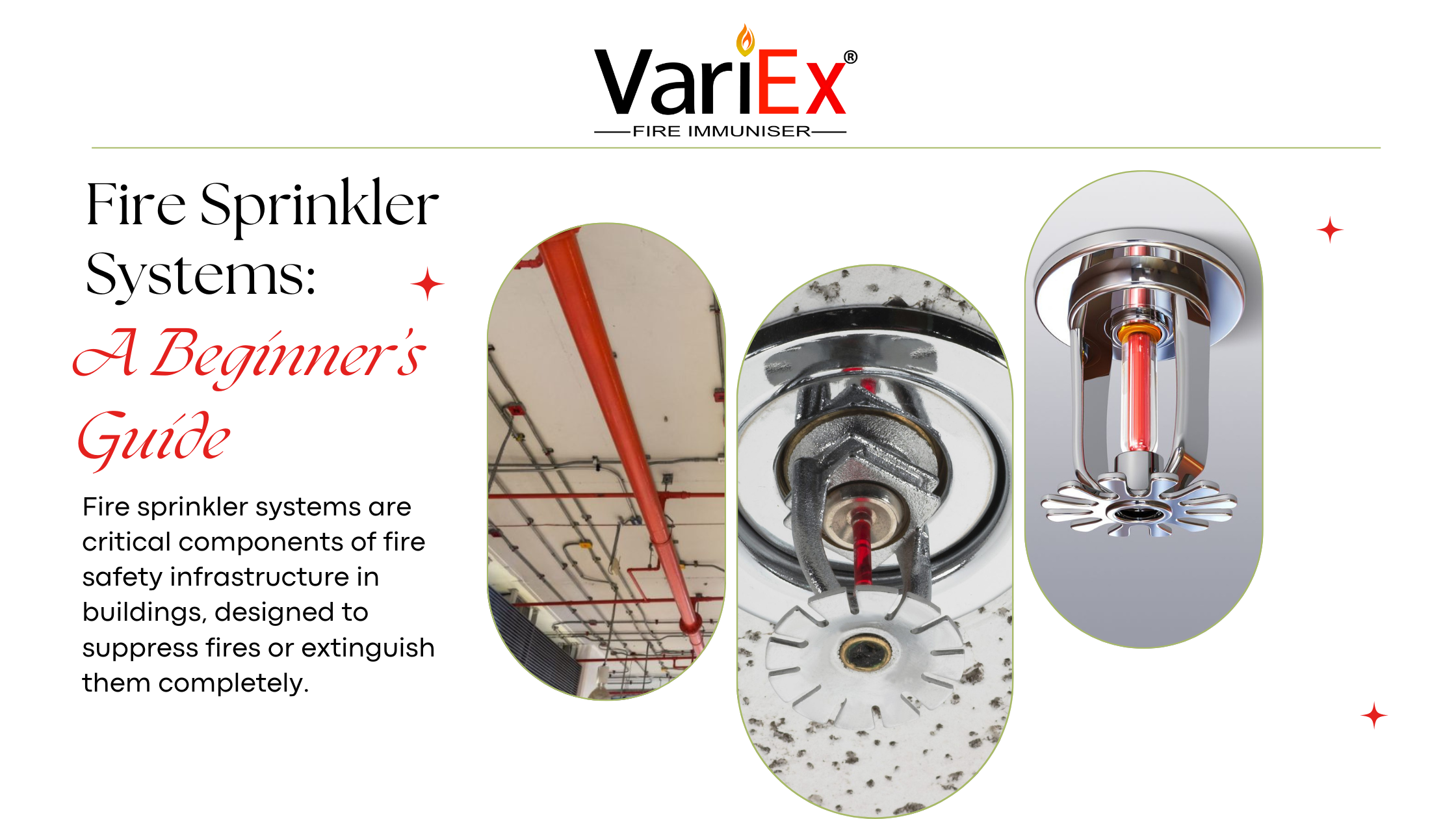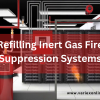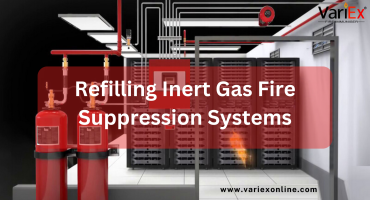![]()
Fire Immuniser
+91-7829629111
Email: info@variex.in
Varistor Technologies Pvt. Ltd.
Block-1, First Floor, Ardente Office One, Hoodi Circle, ITPL Main Road, Bengaluru, Karnataka 560048, IN
Fire Sprinkler Systems: A Beginner’s Guide
Fire sprinkler systems are critical components of fire safety infrastructure in buildings, designed to suppress fires or extinguish them completely. Here’s an introductory overview to understand how they work and their importance:
What are Fire Sprinkler Systems?
Fire sprinkler systems are active fire protection measures that consist of a network of pipes, typically installed within the ceiling or walls of a building, and equipped with sprinkler heads. These systems automatically discharge water when they detect a certain level of heat, indicating a fire.
Components of a Fire Sprinkler System:
- Control Valve: This valve controls the flow of water into the system and is typically kept closed to prevent water from entering the pipes unless a fire is detected.
- Pipes and Fittings: These form the network through which water flows to the sprinkler heads. They are usually made of metal (such as steel or copper) or plastic (such as CPVC).
- Sprinkler Heads: These are the visible components of the system and are fitted with a heat-sensitive element. When the air temperature around a sprinkler head reaches a specific threshold, the heat causes the element to activate, allowing water to flow from that particular sprinkler head.
- Alarm Bell or Panel: Some systems include an alarm bell or panel that activates when water flows through the system, alerting occupants and emergency responders to the presence of a fire.
How Fire Sprinkler Systems Work:
- Detection: Sprinkler heads are individually activated by heat. Only the sprinkler heads closest to the fire will activate, rather than all of them simultaneously.
- Activation: When a sprinkler head detects a fire’s heat, it opens automatically, allowing pressurized water to flow through it and onto the fire below.
- Sprinkler Head Types: There are different types of sprinkler heads designed for various environments and fire risks, including pendant (hanging down), upright (pointing upwards), and concealed (hidden behind a decorative cover).
Benefits of Fire Sprinkler Systems:
- Early Response: They provide immediate response to fires, often suppressing or extinguishing them before they can grow and cause extensive damage.
- Life Safety: Sprinkler systems can significantly reduce the risk of injury or death by controlling the spread of fire, allowing occupants more time to evacuate safely.
- Property Protection: They help protect property and belongings from fire damage, minimizing loss and reducing recovery costs for building owners.
Considerations:
- Maintenance: Regular inspections and maintenance are essential to ensure that fire sprinkler systems remain in optimal working condition.
- Design and Installation: Proper design and installation by qualified professionals are crucial to the effectiveness of a fire sprinkler system.
- Code Compliance: Compliance with local fire codes and regulations is mandatory for the installation and maintenance of fire sprinkler systems.
Conclusion:
Fire sprinkler systems play a vital role in safeguarding buildings and their occupants from the devastating effects of fires. Their automatic activation based on heat detection ensures swift response, limiting fire damage and promoting overall safety. Understanding their components, operation, and benefits is fundamental for anyone concerned with fire safety in residential, commercial, or industrial settings.
Frequently Asked Questions
A fire sprinkler system is an active fire protection measure consisting of a network of pipes installed throughout a building, equipped with sprinkler heads that automatically discharge water when they detect heat from a fire.
Sprinkler heads are activated individually by heat. When a fire generates enough heat in its vicinity, the sprinkler head opens, allowing water to flow onto the fire, suppressing or extinguishing it.
No, fire sprinkler systems are designed so that only the sprinkler heads closest to the fire's heat source activate. This targeted response minimizes water damage and effectively controls the fire.
Fire sprinkler systems provide early detection and response to fires, reducing the risk of injury or death to occupants. They also protect property by minimizing fire damage and reducing recovery costs.
Requirements for fire sprinkler systems vary by location and building type. Many jurisdictions have specific regulations mandating their installation in certain buildings, such as high-rises, commercial properties, and industrial facilities.
Final Say
At VariEx.in and VariexOnline.com, we specialize in supplying and installing top-quality fire fighting systems and equipment. From fire extinguishers to advanced suppression systems, we offer comprehensive solutions tailored to your needs. Our experienced team ensures precise installation and maintenance for optimal safety.
Trust VariEx for reliable fire protection. Contact us online or call 7829629111 to learn more.










